Abstract
1. The effects of indomethacin were investigated on haemodynamics, haematological and blood glucose values, and the release of tumour necrosis factor (TNF), platelet activating factor (PAF) and eicosanoids in anaesthetized pigs receiving 5 micrograms kg-1 E. coli lipopolysaccharide (LPS) over 60 min into the superior mesenteric artery. The animals were observed for an additional period of 2 h after the termination of LPS infusion. 2. Eight of the 17 animals infused with LPS and not treated with indomethacin died within 30 min after the beginning of LPS infusion (non-survivors), while the other 9 survived the experimental period of 3 h though in a state of shock (survivors). 3. No alterations were observed in plasma concentrations of PAF and eicosanoids (thromboxane B2 (TXB2), 6-keto prostaglandin F1 alpha (6-keto PGF1 alpha) and leukotriene B4 (LTB4] in non-survivors. However, a marked increase was detected in TNF release. A significant, though transient, increase in concentrations of PAF, TNF and eicosanoids occurred in the survivors. The peak in the concentrations of PAF and TXB2 preceded the maximum in TNF values in survivors. 4. Another group of 7 LPS-infused pigs was treated with indomethacin (2 mg kg-1, i.v. bolus 60 min before the start of LPS infusion, followed by a continuous infusion of 3 mg kg-1 h-1). This treatment prevented death and shock despite the high concentrations of circulating TNF and PAF. Concentrations of cyclo-oxygenase enzyme products were reduced, whereas LTB4 release was not affected. The effect of indomethacin on haemodynamic changes occurred earlier than on cyclo-oxygenase products.(ABSTRACT TRUNCATED AT 250 WORDS)
Full text
PDF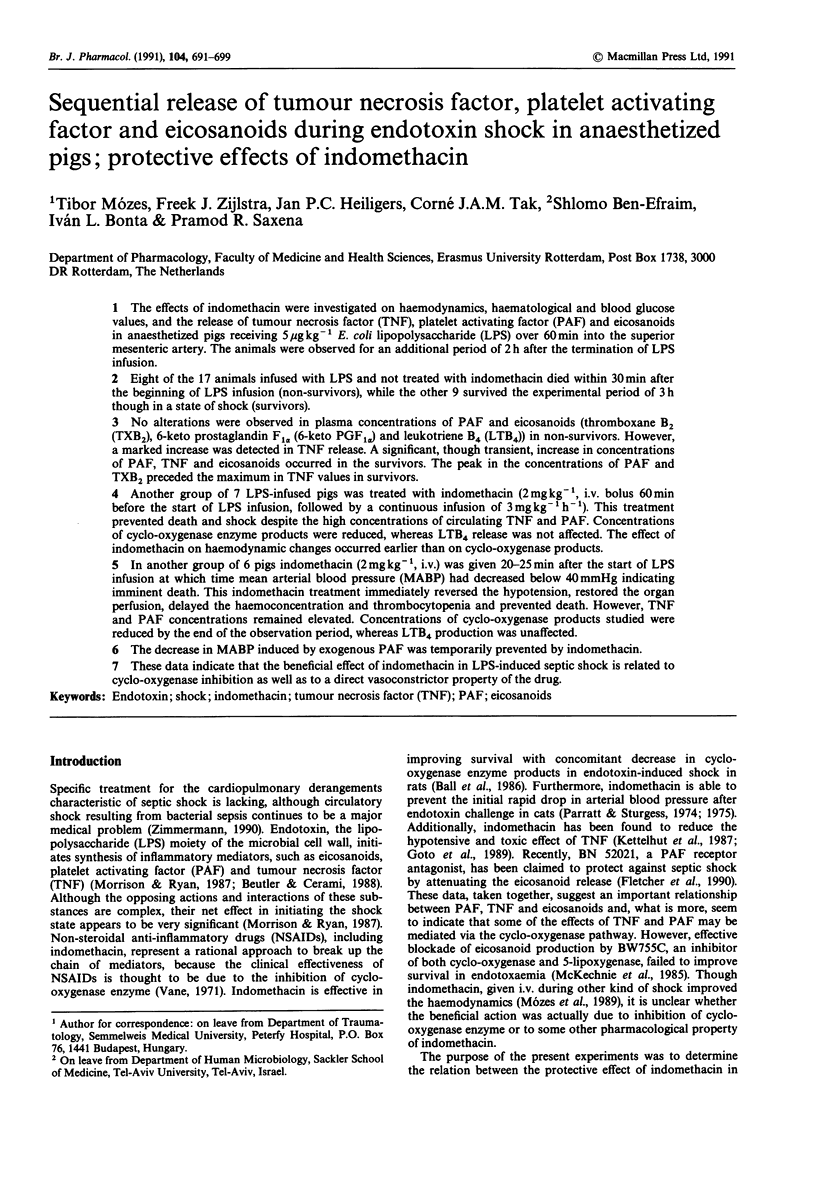
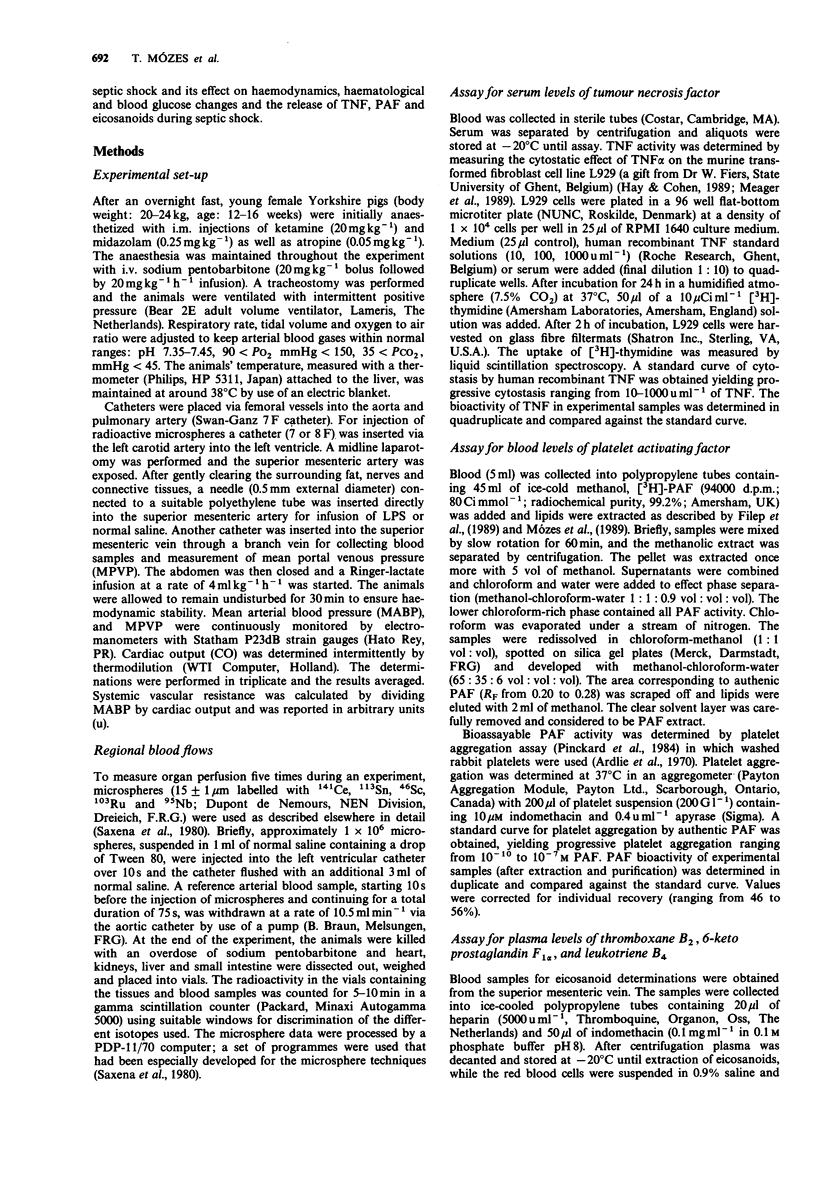
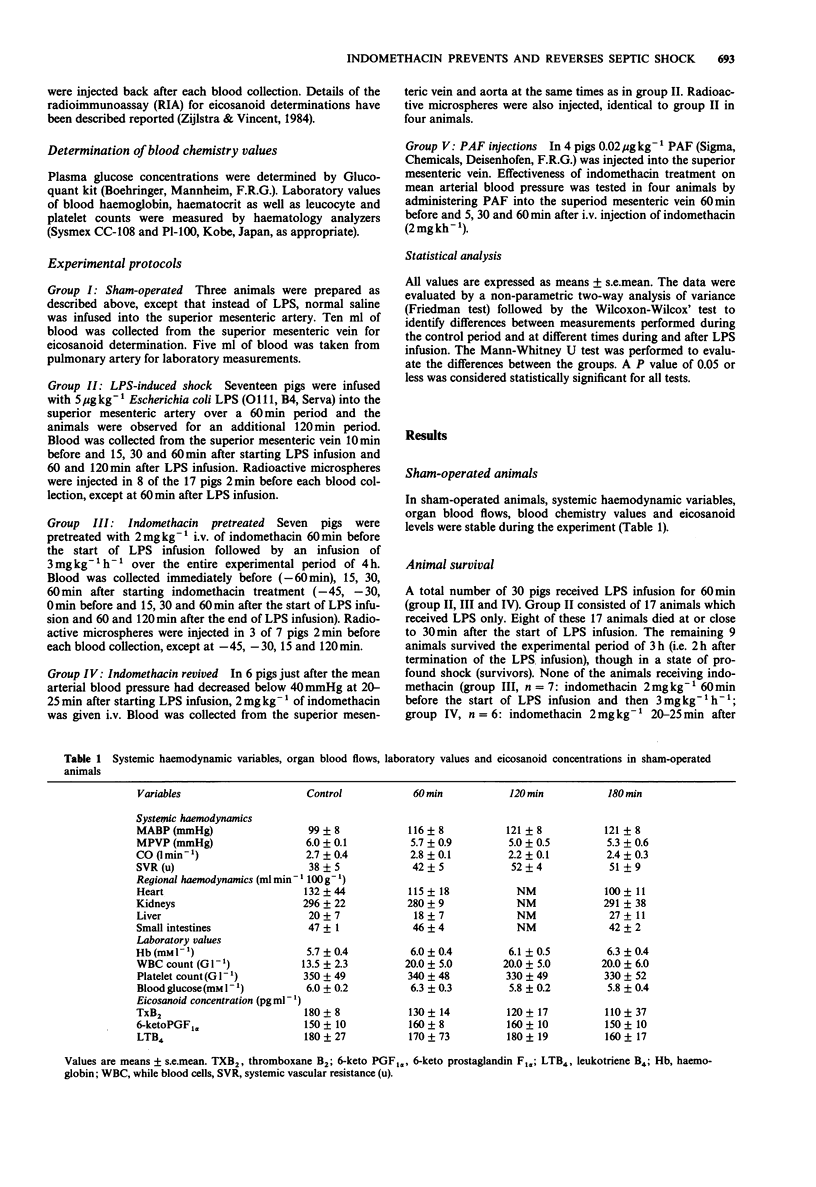
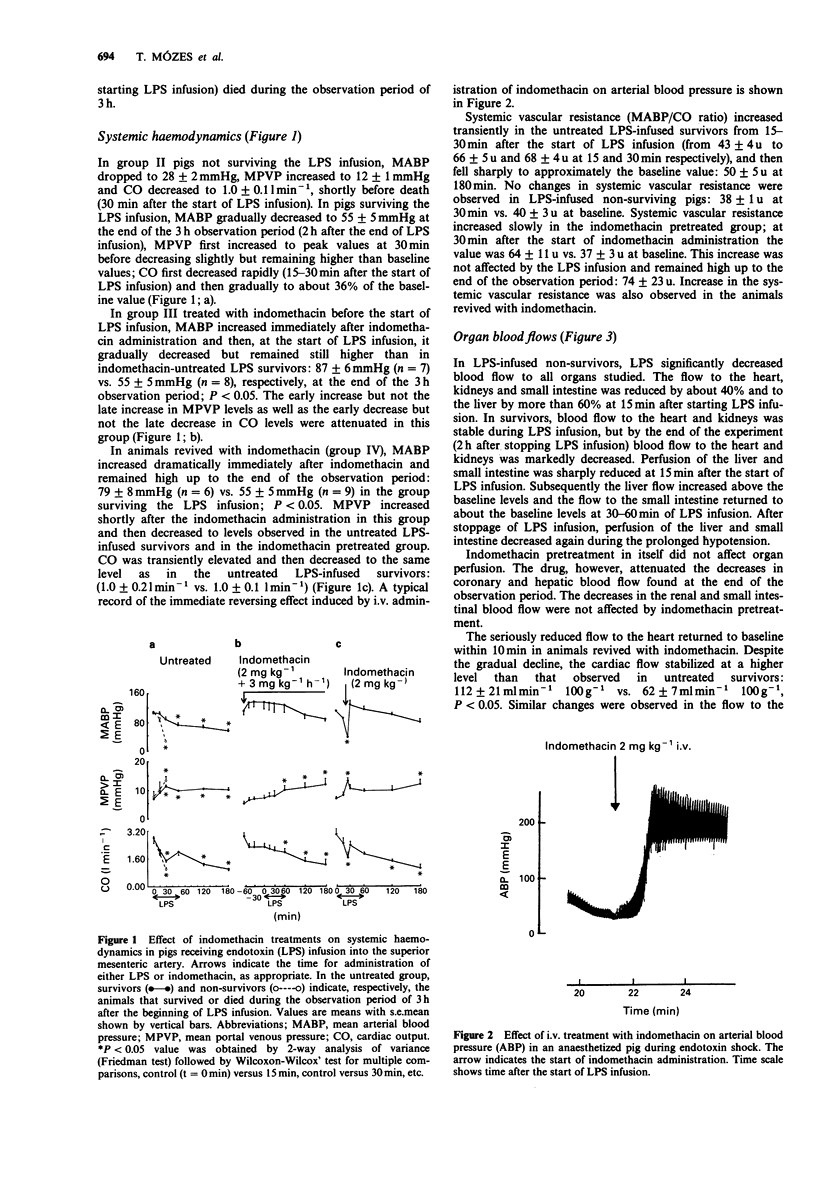
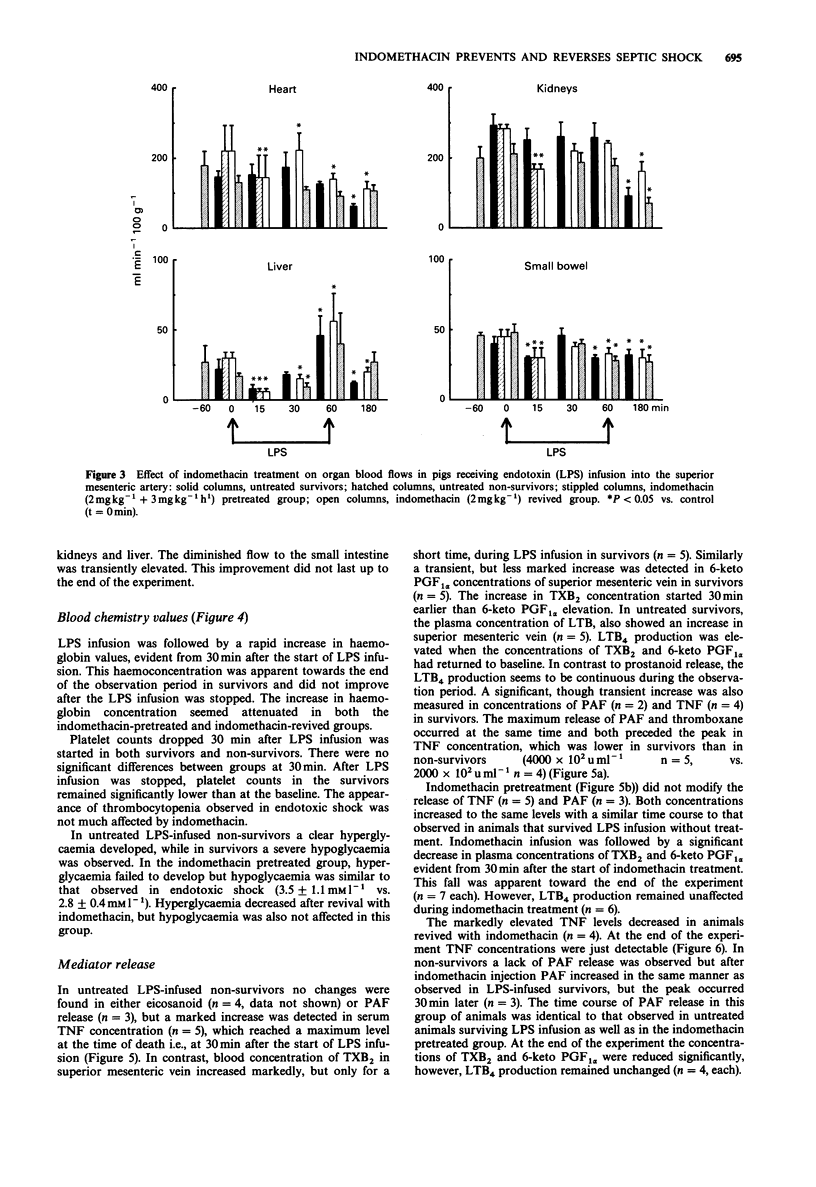
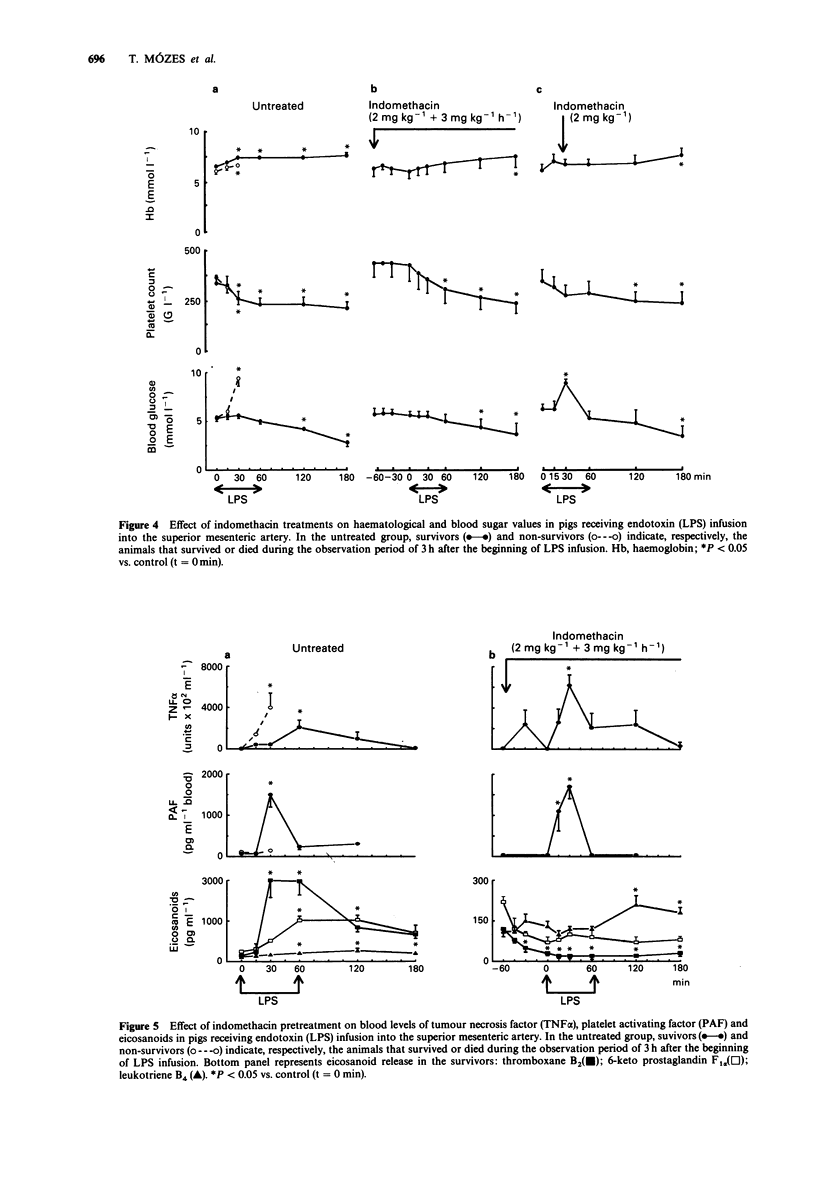
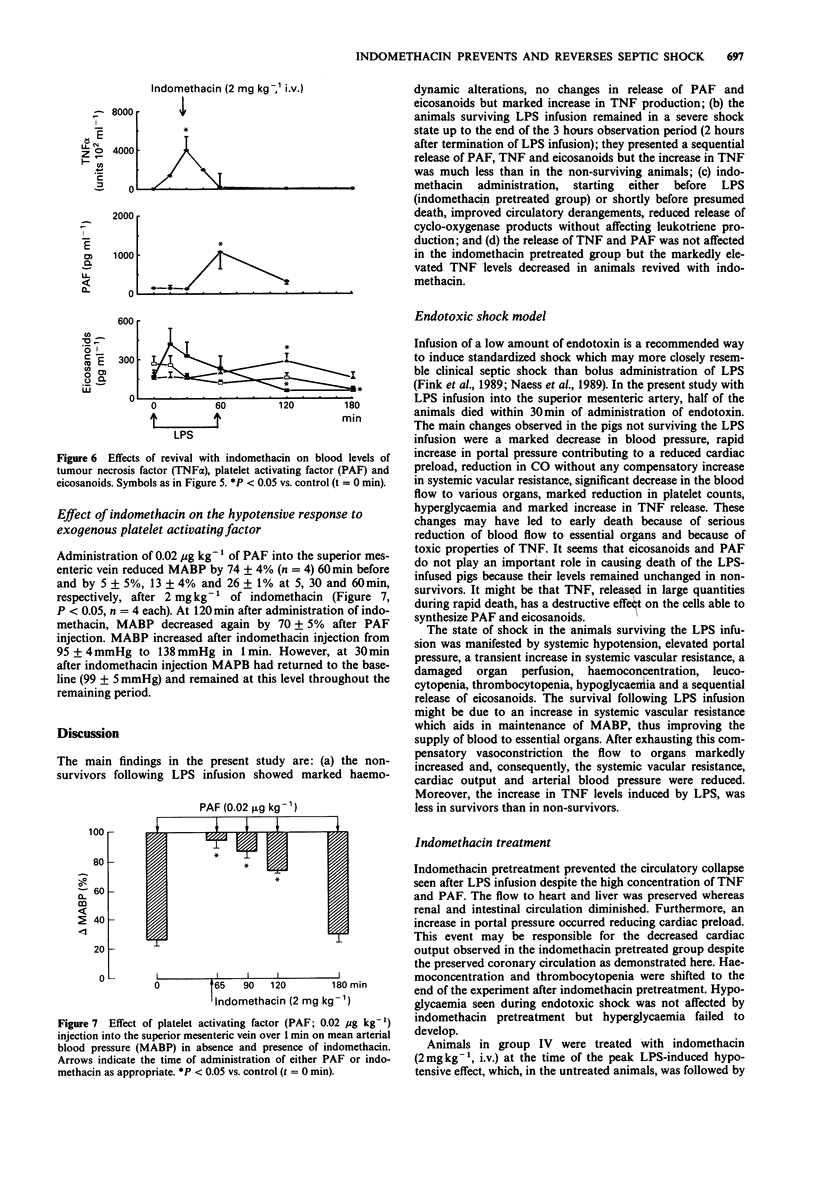
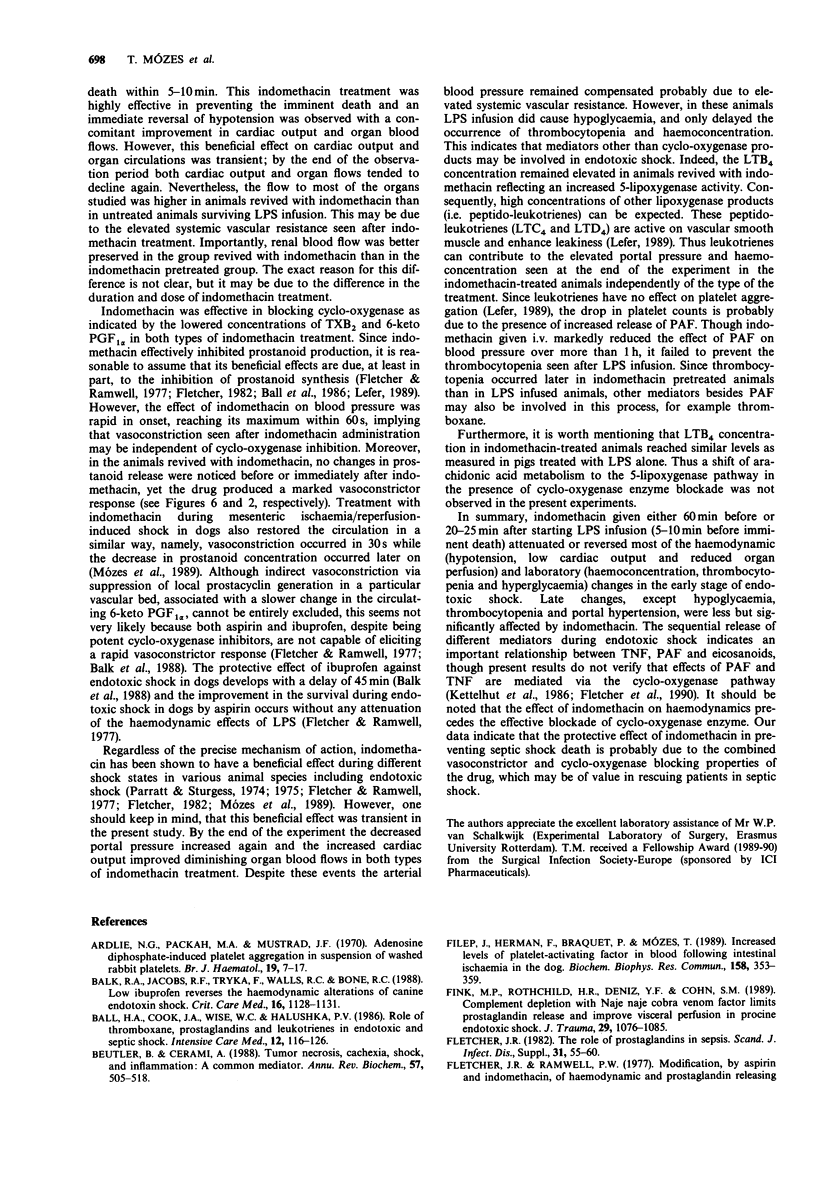
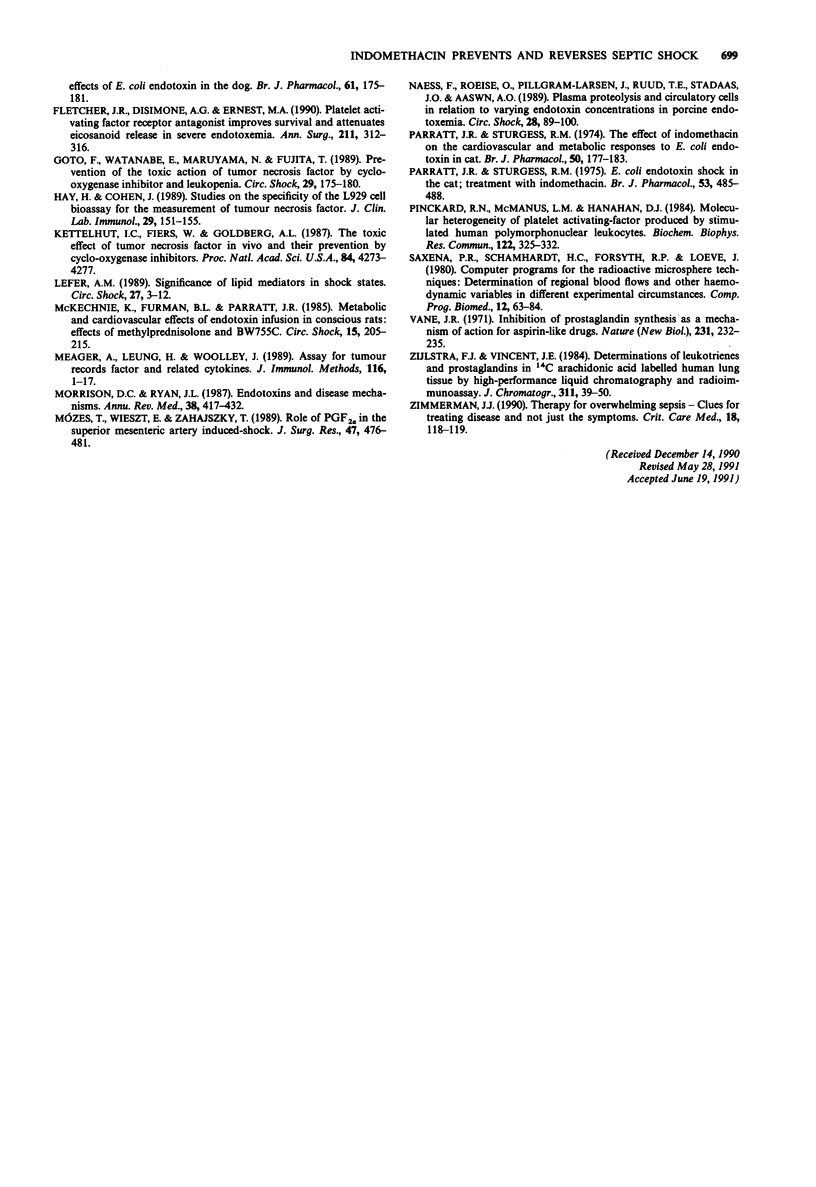
Selected References
These references are in PubMed. This may not be the complete list of references from this article.
- Ardlie N. G., Packham M. A., Mustard J. F. Adenosine diphosphate-induced platelet aggregation in suspensions of washed rabbit platelets. Br J Haematol. 1970 Jul;19(1):7–17. doi: 10.1111/j.1365-2141.1970.tb01596.x. [DOI] [PubMed] [Google Scholar]
- Balk R. A., Jacobs R. F., Tryka A. F., Walls R. C., Bone R. C. Low dose ibuprofen reverses the hemodynamic alterations of canine endotoxin shock. Crit Care Med. 1988 Nov;16(11):1128–1131. doi: 10.1097/00003246-198811000-00009. [DOI] [PubMed] [Google Scholar]
- Ball H. A., Cook J. A., Wise W. C., Halushka P. V. Role of thromboxane, prostaglandins and leukotrienes in endotoxic and septic shock. Intensive Care Med. 1986;12(3):116–126. doi: 10.1007/BF00254925. [DOI] [PubMed] [Google Scholar]
- Beutler B., Cerami A. Tumor necrosis, cachexia, shock, and inflammation: a common mediator. Annu Rev Biochem. 1988;57:505–518. doi: 10.1146/annurev.bi.57.070188.002445. [DOI] [PubMed] [Google Scholar]
- Filep J., Hermán F., Braquet P., Mózes T. Increased levels of platelet-activating factor in blood following intestinal ischemia in the dog. Biochem Biophys Res Commun. 1989 Jan 31;158(2):353–359. doi: 10.1016/s0006-291x(89)80055-5. [DOI] [PubMed] [Google Scholar]
- Fink M. P., Rothschild H. R., Deniz Y. F., Cohn S. M. Complement depletion with Naje haje cobra venom factor limits prostaglandin release and improves visceral perfusion in porcine endotoxic shock. J Trauma. 1989 Aug;29(8):1076–1085. doi: 10.1097/00005373-198908000-00004. [DOI] [PubMed] [Google Scholar]
- Fletcher J. R., DiSimone A. G., Earnest M. A. Platelet activating factor receptor antagonist improves survival and attenuates eicosanoid release in severe endotoxemia. Ann Surg. 1990 Mar;211(3):312–316. [PMC free article] [PubMed] [Google Scholar]
- Fletcher J. R., Ramwell P. W. Modification, by aspirin and indomethacin, of the haemodynamic and prostaglandin releasing effects of E. coli endotoxin in the dog. Br J Pharmacol. 1977 Oct;61(2):175–181. doi: 10.1111/j.1476-5381.1977.tb08402.x. [DOI] [PMC free article] [PubMed] [Google Scholar]
- Fletcher J. R. The role of prostaglandins in sepsis. Scand J Infect Dis Suppl. 1982;31:55–60. [PubMed] [Google Scholar]
- Goto F., Watanabe E., Maruyama N., Fujita T. Prevention of the toxic action of tumor necrosis factor by cyclooxygenase inhibitor and leukopenia. Circ Shock. 1989 Nov;29(3):175–180. [PubMed] [Google Scholar]
- Hay H., Cohen J. Studies on the specificity of the L929 cell bioassay for the measurement of tumour necrosis factor. J Clin Lab Immunol. 1989 Jul;29(3):151–155. [PubMed] [Google Scholar]
- Kettelhut I. C., Fiers W., Goldberg A. L. The toxic effects of tumor necrosis factor in vivo and their prevention by cyclooxygenase inhibitors. Proc Natl Acad Sci U S A. 1987 Jun;84(12):4273–4277. doi: 10.1073/pnas.84.12.4273. [DOI] [PMC free article] [PubMed] [Google Scholar]
- Lefer A. M. Significance of lipid mediators in shock states. Circ Shock. 1989 Jan;27(1):3–12. [PubMed] [Google Scholar]
- McKechnie K., Furman B. L., Parratt J. R. Metabolic and cardiovascular effects of endotoxin infusion in conscious unrestrained rats: effects of methylprednisolone and BW755C. Circ Shock. 1985;15(3):205–215. [PubMed] [Google Scholar]
- Meager A., Leung H., Woolley J. Assays for tumour necrosis factor and related cytokines. J Immunol Methods. 1989 Jan 6;116(1):1–17. doi: 10.1016/0022-1759(89)90306-2. [DOI] [PubMed] [Google Scholar]
- Morrison D. C., Ryan J. L. Endotoxins and disease mechanisms. Annu Rev Med. 1987;38:417–432. doi: 10.1146/annurev.me.38.020187.002221. [DOI] [PubMed] [Google Scholar]
- Mózes T., Wieszt E., Zahajszky T. Role of PGF2 alpha in the superior mesenteric artery-induced shock. J Surg Res. 1989 Dec;47(6):476–481. doi: 10.1016/0022-4804(89)90123-6. [DOI] [PubMed] [Google Scholar]
- Naess F., Roeise O., Pillgram-Larsen J., Ruud T. E., Stadaas J. O., Aasen A. O. Plasma proteolysis and circulating cells in relation to varying endotoxin concentrations in porcine endotoxemia. Circ Shock. 1989 Jun;28(2):89–100. [PubMed] [Google Scholar]
- Parratt J. R., Sturgess R. M. E. coli endotoxin shock in the cat; treatment with indomethacin. Br J Pharmacol. 1975 Apr;53(4):485–488. doi: 10.1111/j.1476-5381.1975.tb07384.x. [DOI] [PMC free article] [PubMed] [Google Scholar]
- Parratt J. R., Sturgess R. M. The effect of indomethacin on the cardiovascular and metabolic responses to E. coli endotoxin in the cat. Br J Pharmacol. 1974 Feb;50(2):177–183. doi: 10.1111/j.1476-5381.1974.tb08559.x. [DOI] [PMC free article] [PubMed] [Google Scholar]
- Pinckard R. N., Jackson E. M., Hoppens C., Weintraub S. T., Ludwig J. C., McManus L. M., Mott G. E. Molecular heterogeneity of platelet-activating factor produced by stimulated human polymorphonuclear leukocytes. Biochem Biophys Res Commun. 1984 Jul 18;122(1):325–332. doi: 10.1016/0006-291x(84)90478-9. [DOI] [PubMed] [Google Scholar]
- Saxena P. R., Schamhardt H. C., Forsyth R. P., Hoeve J. Computer programs for the radioactive microsphere technique. Determination of regional blood flows and other haemodynamic variables in different experimental circumstances. Comput Programs Biomed. 1980 Dec;12(2-3):63–84. doi: 10.1016/0010-468x(80)90053-7. [DOI] [PubMed] [Google Scholar]
- Vane J. R. Inhibition of prostaglandin synthesis as a mechanism of action for aspirin-like drugs. Nat New Biol. 1971 Jun 23;231(25):232–235. doi: 10.1038/newbio231232a0. [DOI] [PubMed] [Google Scholar]
- Zijlstra F. J., Vincent J. E. Determination of leukotrienes and prostaglandins in [14C] arachidonic acid labelled human lung tissue by high-performance liquid chromatography and radioimmunoassay. J Chromatogr. 1984 Nov 9;311(1):39–50. doi: 10.1016/s0378-4347(00)84689-7. [DOI] [PubMed] [Google Scholar]
- Zimmerman J. J. Therapy for overwhelming sepsis--clues for treating disease and not just the symptoms. Crit Care Med. 1990 Jan;18(1):118–119. doi: 10.1097/00003246-199001000-00025. [DOI] [PubMed] [Google Scholar]


